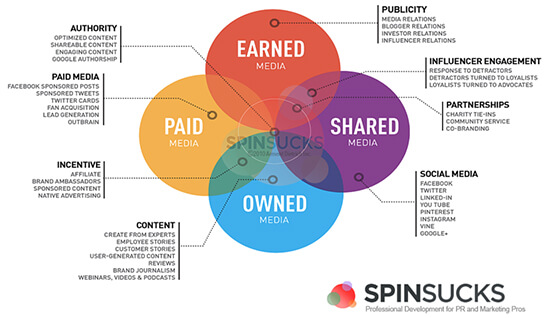16 essential components of a communication plan
Before formulating tactics, establish your objective, goals, process and key challenges.

Whether you’re working for an agency, a nonprofit or a corporation, you must have a meticulously crafted communication plan.
A detailed plan and timeline helps you set expectations, measure outcomes and derive insights.
Here are 16 facets of an effective communication plan:
1. A process
This is crucial. If you just scrawl some goals on a whiteboard and call it a day, it won’t work.
Instituting a step-by-step process will force you to confront challenges and contradictions that could hinder progress. Hammer out exactly how and when you plan to achieve your goals.
2. The objective
To drive real business results, your communication objective should be to increase conversions.
Establish how many new customers you’d like to acquire. Also, describe how much growth can come from existing customers. After all, it’s far easier to keep existing customers than it is to obtain new ones.
Your projections should be realistic. Setting a goal of $1 trillion in new sales won’t do you any favors.
3. Goals
Communicators often struggle to set clear, cohesive goals. Home in on a handful of measurable, achievable goals. For instance, how will you reach your objective of increasing conversions? Work backward from the finish line:
- Increase website traffic from XX to XX
- Build the email database from XX to XX
- Increase marketing qualified leads from XX to XX
- Increase sales qualified leads from XX to XX
- Convert XX percent of sales qualified leads to customers
If you don’t have the numbers you need right off the bat, set benchmarks. Try crafting a 60- or 75-day plan to set benchmarks, then go back and create the goals.
4. Strategy
Your strategy helps you achieve your objective. If that is to enhance your reputation to attract more clients, your strategy should briefly describe how you’ll do that.
This is the vision of your communications plan. What does success look like a year from now? Write it down.
5. The plan
You must get input from your client or your executive team to complete this step. What, exactly, do your leaders hope to achieve? You cannot create change in the organization unless you know where the business is going and how you can help it get there.
6. Executive summary
Create a one-page recap of everything in your plan. It should include:
- Mission
- Vision
- Core values
- Fiscal year business goals
- Differentiators
- Key messages
- List of communications tactics
- Any unresolved issues or challenges that came up in the initial planning meetings
- A list of things you would like to do, if resources become available
7. Key challenges
What are your biggest obstacles? It could be anything from a lazy salesperson to a commoditized business. Perhaps your organization’s reputation is less than stellar, or maybe your chief competitor has a stranglehold on a market you covet.
Whatever it is, create a description of the products or services you want to market, and establish which challenges you might face in doing so. List every obstacle you foresee.
8. Situation analysis
This clarifies key industry metrics.
One client does this quarterly. He includes what’s going on economically, from a global perspective, as well as industry metrics.
Your situation analysis should include your overall goals and focus, your culture, your perceived strengths and weaknesses, and your market share position.
9. Customer analysis
Who are the three or four customer types you want to attract? How many customers do you want to have by year-end? What are your targeted customers’ values?
Include an overview of the process those prospects use to hire an organization like yours (or your client’s).
10. Competitor analysis
Clarify your own marketing position, and identify the strengths and weaknesses of your closest competitors.
Analyze the domain authority of your competitors to see where they rank for your priority keywords. Moz and SEMRush will both let you do this automatically—if you have $99 a month to spend.
Keep tabs on any weaknesses that could curtail your efforts to compete.
11. Implementation summary
This analysis of how you will use the above information to achieve your goals should be as specific as possible to enforce accountability.
Who needs to do what, and on what timeline? Do you need help from other departments? (The answer is yes.)
Summarize the big things—product launches, events, speaking engagements, board meetings—and clarify who should help and how.
12. Positioning statements
These are the key messages you’ll use in marketing materials to stand out from competitors; highlight your key service mission and qualitative skillsets.
13. Cost strategy
It might seem odd to add a cost strategy into your communication plan, but it’s important to look at the overall business. Costs can affect your ability to deliver results, right?
Include an overview of the organization’s pricing structure, and compare your prices against those of relevant competitors. Consider posting pricing on your website.
14. The PESO model
Now you’re ready for tactics. That’s where most communicators start, but you can see how much must be clarified before you get here. Don’t put the cart before the horse.
Let your creativity run wild, but your tactics should fit within the PESO model.

Specify who on your team will implement particular elements, and plot out a timeline.
15. Changing market analysis
It’s important to forecast fiscal changes in your target industries over the next several years. How will these changes affect you?
For instance, no one could have predicted the 2014 “polar vortex” that brought business to a screeching halt. Chaos and crises are never far away.
Prepare for outside forces that could affect your communication plan—even if you can’t predict specific circumstances.
16. Metrics
Last, but certainly not least, include relevant metrics.
Scroll back up to the “Goals” section. See those XXs? Those should be actual numbers, which should become your metrics.
Make sure you follow the SMART structure when creating your communications plan: Are they specific, measurable, attainable, realistic, time-bound?
Write it down
Work with colleagues in other departments to beef up your insights and secure broader buy-in. Force a strategy session with top executives if you must.
Access the organization’s analytics and any other data you can get your hands on—and then get to work.
A version of this post first appeared on Spin Sucks.







WOW THIS IS AMAZING CONTENT
ALSO THE CONTENT YOU PUT ON E-RETAILER IS PART OF A COMMUNICATION PLAN, TO ME
Great article and really helpful. I am a copywriter and just began putting together mini communications plans for a recent client. This is a great summary of what I needed to know for a more detailed plan.